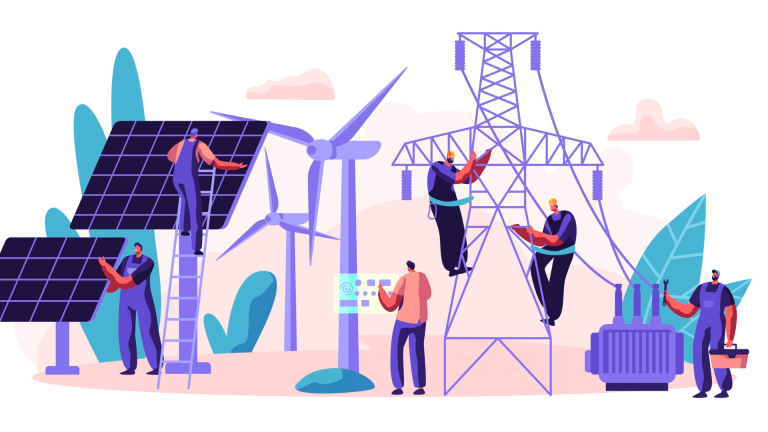From utility technicians to electricians to engineers in energy and utilities, workers can take advantage of voice technology to quickly access key information, communicate with their team, and input data without the use of their hands. From custom headsets to mobile devices purpose-built to withstand changing weather conditions, voice assistants can be embedded into nearly any sort of hardware, or layered onto the software these professionals already use.
Here are three ways the energy and utility companies can transform their operations with voice technology today:
1. Data On-Demand Via Voice AI
To prepare for the installation of new equipment or the repair of broken parts, utility technicians need to access key information from documents, records, and company databases. With their hands busy controlling tools and equipment, voice user interfaces can provide the data necessary to complete the procedure with a few simple queries by the technician.
For example, a core responsibility of utility companies is to regularly inspect utility poles to determine safety and operational issues. A utility worker might ask the voice assistant, “When was the last time this utility pole was repaired?” or “Pull up inspection history” to determine if there are any specific issues that need to be addressed.
In addition, voice technology can help technicians record data without the use of pen and paper or the swipes and taps of a touchscreen. During a utility pole inspection, the foreman performs several tasks, including visual assessments, using drills and tools to determine wood decay, and recording pole measurements to ensure the structures adhere to safety standards.
Instead of taking the time to write up a report and input the data into the company’s systems once the inspection has taken place, voice AI offers these busy technician an easy way to record information during the inspection without diverting their focus or requiring them to take handwritten notes and transcribe them later. Recording the information as it’s collected ensures important data and measurements are recorded correctly as they are collected.









